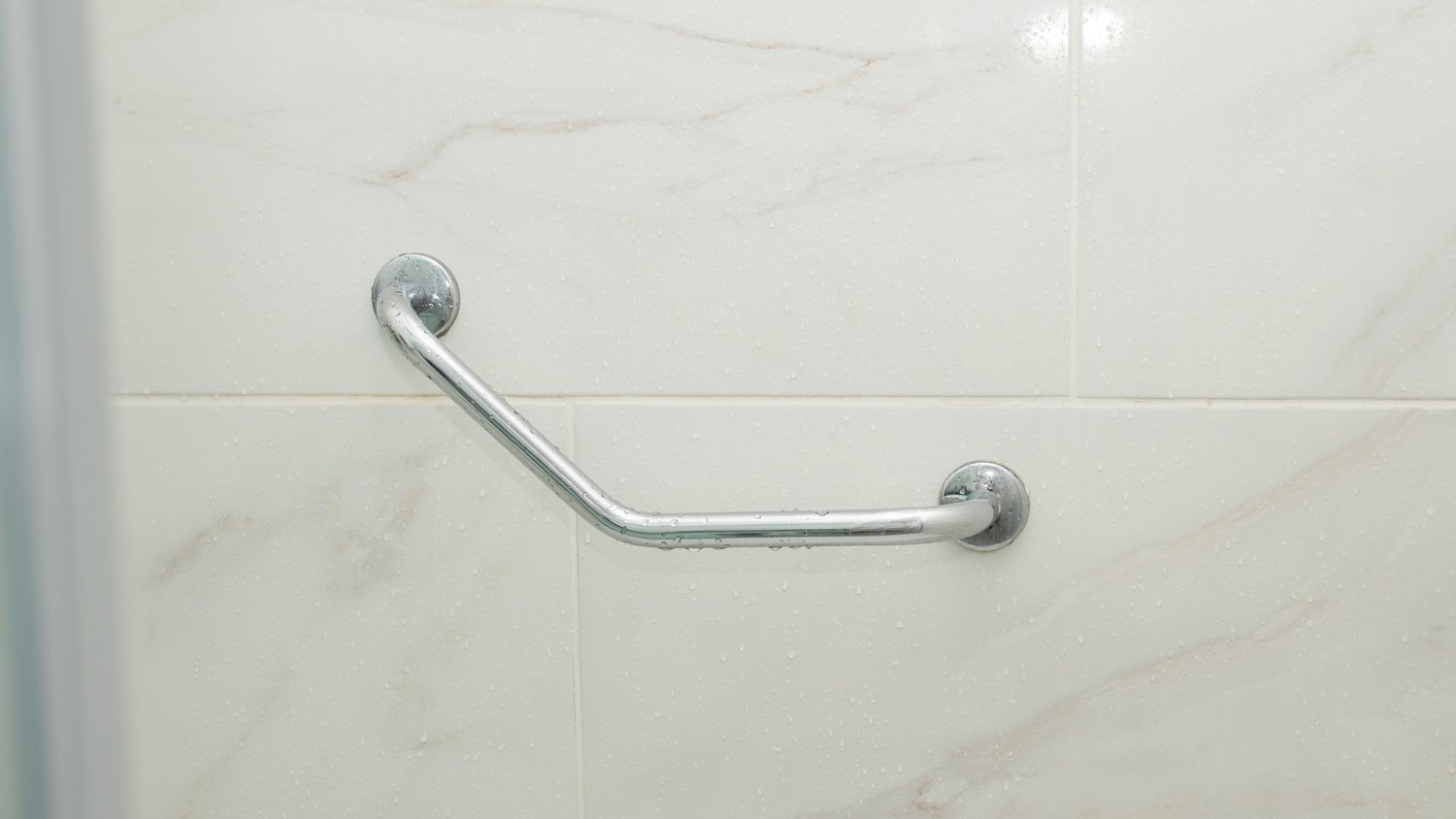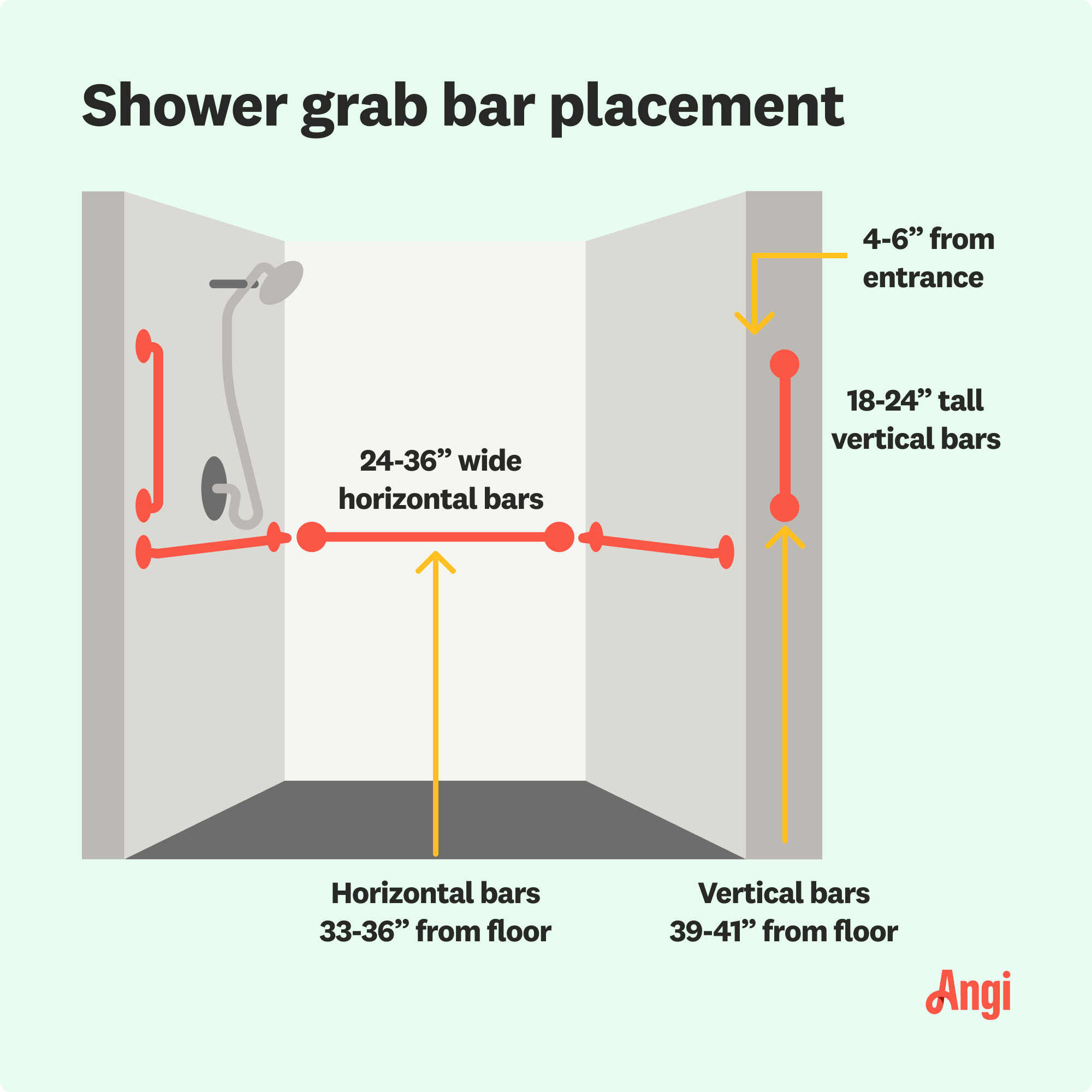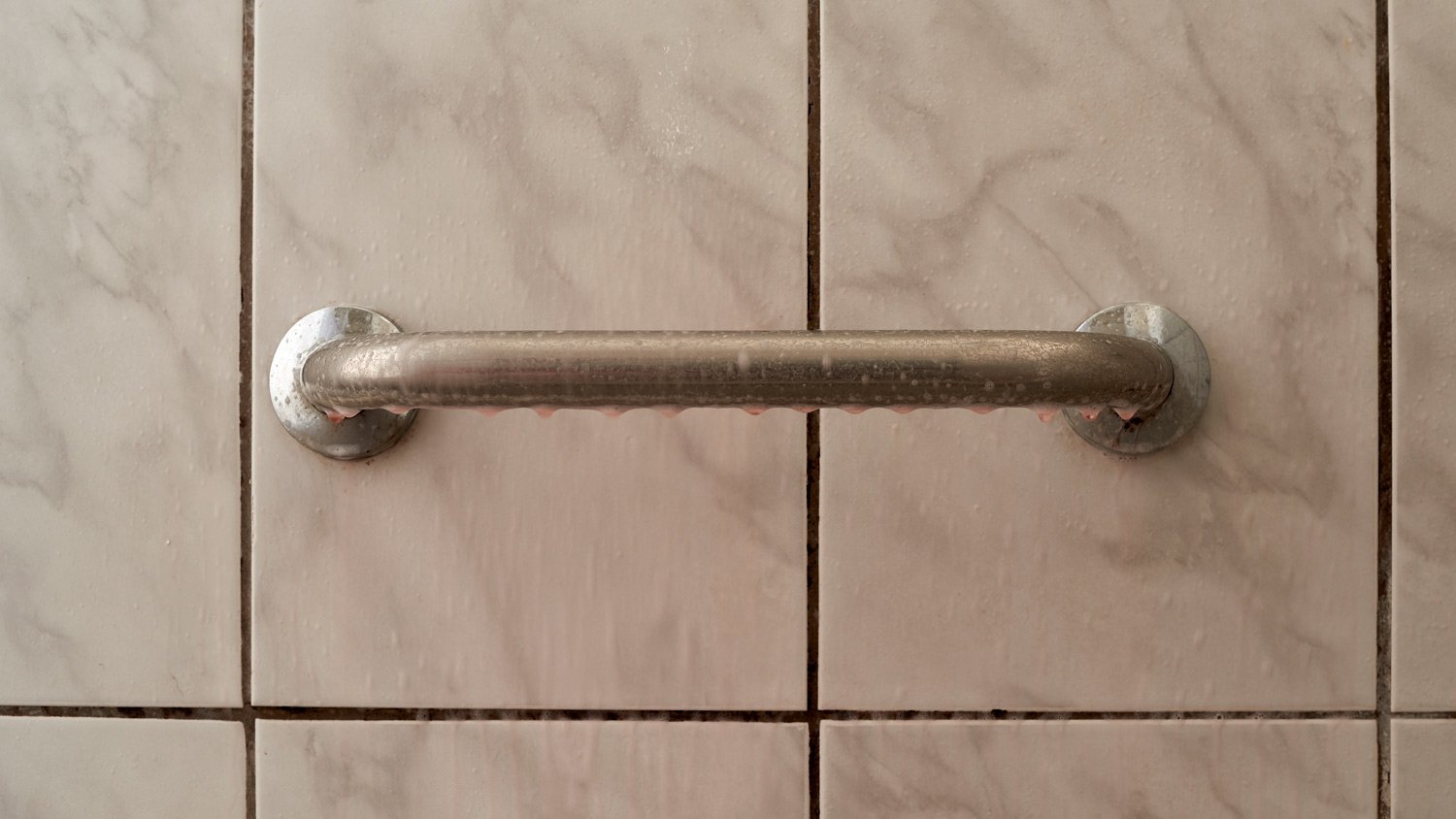Shower Grab Bar Placement 101: Understanding Where to Install Grab Bars
Grab bars keep you safe while you scrub-a-dub-dub


Grab bars keep you stable when standing or moving in your shower.
Install grab bars in locations you can easily reach.
The entry wall is the most vital location for a grab bar.
Always secure a grab bar to your wall studs.
The average cost of installation is $340.
There’s nothing like a warm soak or refreshing shower after a long day. However, safety around water is essential when slip-and-fall accidents contribute to many bathroom injuries. Grab bars can help prevent accidents in the shower, but where do you install them for optimal safety while bathing? We break down everything you need to know about shower grab bar placement to make your shower more accessible.
What Are Grab Bars?
A grab bar is a safety rail you mount to a surface to hold onto for stability and can prevent falls in the shower. Manufacturers construct shower safety bars from stainless steel to prevent corrosion. For additional stability, some grab bars can include textured surfaces to give you a better grip with increased slip resistance.
Grab bars come in a variety of lengths. However, the most commonly installed bars are 18 to 36 inches long and 1½ inches in diameter. Choose a length that allows you to grab the bar in positions where you’ll need it most.
Consider whether your grab bar adheres to the Americans With Disabilities Act (ADA). While residential showers are subject to user discretion, the ADA guidelines are a vital resource to consult when installing accessible bathroom fixtures. The standards set by this act for bathroom grab bars include the following necessities:
The manufacturer constructs the bar from heavy-duty 18-gauge brushed satin stainless steel with rounded edges.
Flanges, or the section that provides the anchoring surface for attachment to your wall, meet ADA standards for maximum strength and durability.
Bar diameter shall not exceed 1½ inches for ease of use by children and seniors.
Space allowance between the bar and the wall shall be no less than 1½ inches.
The grab bar must support a minimum of 250 pounds of weight.
Universal design aims to make bathrooms functional and safe for all in the home. Features include grab bars, a comfort height toilet, slip-resistant flooring, a shower seat, a walk-in tub, a curbless shower, and making the bathroom wheelchair accessible.
If you’re unsure where to place your shower grab bars or how to secure them to the shower walls, consult and hire a local bathroom remodeling professional. They can help design an accessible shower with safety features for your household.
Why Does Shower Grab Bar Placement Matter?

When installing grab bars, their location plays a significant part in their effectiveness at keeping you and others safe. There are two guidelines when determining how many grab bars to add to your shower:
Install two bars for basic needs, such as standing, moving around, and entering or exiting the shower.
Installing four bars will help with more complex needs, such as sitting in a seated shower or showering with mobility and balance issues.
If multiple people use your shower, you must account for their varying heights and weights. When installing four grab bars, arrange them so that you and others can reach at least two bars at a time. Below, you’ll find more details about adding grab bars to different walls of the shower.
Best Places to Install Grab Bars in Your Shower
A grab bar gives you peace of mind when you have concerns about stability in the shower, whether you’re recovering from an injury or need increased accessibility for aging in place. But where you install them in your shower matters significantly. Here are several of the best grab bar installation spots in your shower to give you an idea of where to start.

Entry Wall
The entry wall of your shower is the most important place to install a grab bar because most slip-and-fall accidents occur when entering or exiting the shower. Most showers have a small lip or ledge to step over, and stability is at its lowest when you’re standing on one leg. This position requires extra support, especially since these areas are slippery.
Place the grab bar vertically about 4 to 6 inches inward from the door jamb or shower entrance. The most common lengths for this bar are 18 or 24 inches to ensure enough coverage.
Side Wall
The side wall is opposite the entrance, and a grab bar here is important for moving forward and backward in the shower. It’s essential for balance when your eyes are closed, such as after applying shampoo. A grab bar on the side wall can also be helpful when standing up after sitting on a shower seat.
Depending on the length of your shower, a bar installed on the side wall can be 24 or 36 inches. Place the bar horizontally with the top of the bar sitting around waist height. If you install a 24-inch bar, shift it closer to the wall with the faucet handles so you can grab the bar while leaning over to adjust the water.
You can also install a longer bar up to 48 inches. Place this bar diagonally at a 45-degree angle (pointing up toward the faucet and handles). Doing so will help those showering in a seated position who need extra assistance to pull themselves back up to a standing position.
Front Wall
Installing a grab bar on the front wall, also known as the plumbing wall, will give you stability while moving around in the shower or adjusting the water flow. This bar serves a similar purpose as the side wall bar, giving you an extra layer of protection from slipping.
Install the front wall bar horizontally so it sits around waist height. As with the side wall, the most common length for this bar is 24 or 36 inches, depending on the available space. You can also install your front wall grab bar vertically at a height you can reach while sitting and standing, about 39 to 41 inches from the floor.
Back Wall
A grab bar on the back wall assists with moving and turning, especially if your shower is small. This bar’s placement should be the same as the side and front walls. Note that if your shower is especially long and you don’t stand, move, or enter near the back of the shower, you can skip installing a bar on the back wall.
Should You Install Shower Grab Bars in Studs?

It’s vital that your shower grab bar can support at least 250 pounds. To ensure that you have enough support in vulnerable positions, secure your grab bar to wall studs. Tile, drywall, and other construction materials aren’t sturdy enough to withstand a person pulling on them with the weight necessary to remain stable on a wet surface.
How Much Does Shower Grab Bar Installation Cost?
Fortunately, installing a shower bar is not a project you’ll have to break the bank to complete. The installation cost, including the materials and tools, can average around $340. The material cost will increase if you want a grab bar with a custom finish, like brass or textured.
DIY Shower Grab Bar Installation vs. Hiring a Pro
If you understand how to install a shower grab bar and have the necessary tools, you can take this project on yourself with minimal fuss. However, if your shower wall has features or materials that make installation more complex, you can call a bathroom remodeling pro to make your shower safer with new grab bars.





- Bathroom Remodeling
- Kitchen Remodeling
- Shower Installation
- Stair Installers
- Bathtub Installation
- Shower Door Installers
- Kitchen Design
- Bathroom Design Companies
- Storm Shelter Builders
- Pre-Made Cabinets
- Kitchen Refacing
- Bathtub Replacement
- Ceiling Tile Installation
- Suspended Ceiling Companies
- Residential Designers
- Stair Builders
- Remodel Designers
- Shower Enclosures
- Home Renovations
- Kitchen Renovations
- Garage Remodeling
- Grab Bar Installation
- Walk-In Tub Installers
- Tub to Shower Conversion
- Balcony Contractors











